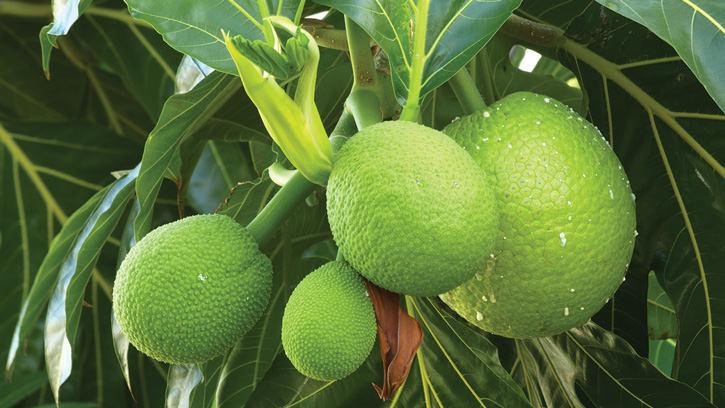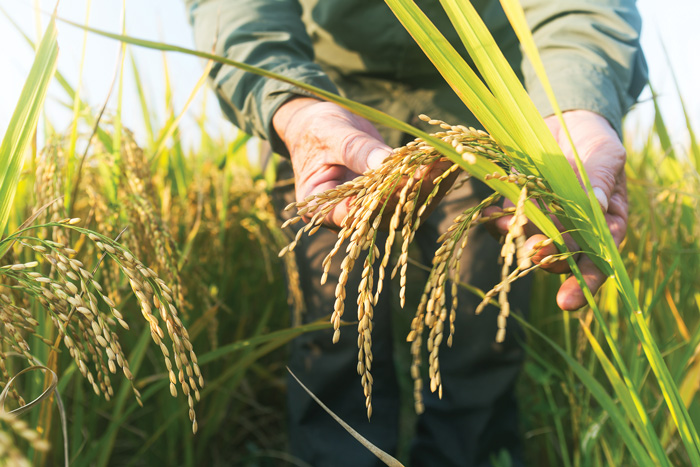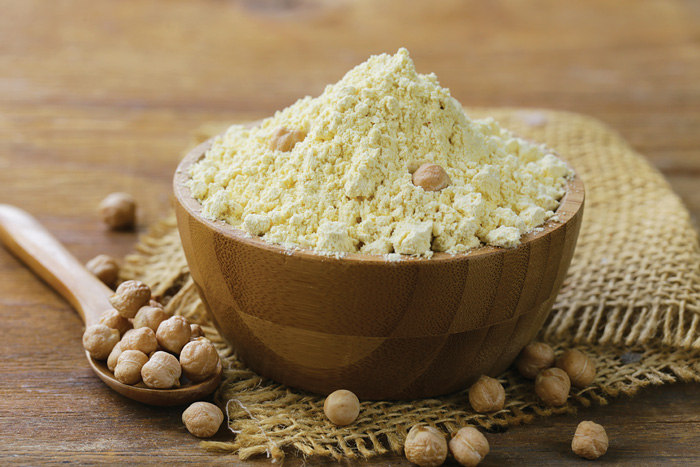Trend predictions for 2021; Is breadfruit the new superfood?
NEWS
Breadfruit, the new superfood?
A fruit that has long been a diet staple in tropical and South Pacific countries has all the earmarks of being the next superfood, according to a team of British Columbia researchers. Breadfruit, which can be eaten on its own or dried and ground into a gluten-free flour, has the potential to improve worldwide food security and mitigate diabetes, according to the researchers.
During a series of studies, the scientists used flour ground from dehydrated breadfruits to gather data on the impacts of a breadfruit-based diet on mice and on an enzyme digestion model. After three weeks on the breadfruit diet, mice showed a significantly higher growth rate and body weight than those on a standard wheat-based diet, with similar body composition. In the enzyme digestion model, breadfruit protein was found to be easier to digest than wheat protein.
As a nutritious staple food, breadfruit could make inroads in food sustainability for many populations, according to lead researcher Ying Liu. As an example, she cites the average daily consumption of grain in the United States at 189 grams. The same amount of cooked breadfruit could meet up to nearly 57% of daily fiber requirements and more than 34% of protein requirements while also providing vitamin C, potassium, iron, calcium, and phosphorus.
“Overall, these studies support the use of breadfruit as part of a healthy, nutritionally balanced diet,” said Liu in a press release. “Flour produced from breadfruit is a gluten-free, low glycemic index, nutrient-dense, and complete protein option for modern foods.”
Front-of-package labels promote nutrition
After analyzing 16 years of data on more than 21,000 products in 44 food categories, researchers at the University of South Carolina concluded that the inclusion of nutrition data on front-of-package labels is associated with improved nutritional content.
“We wanted to know whether food companies were responding to increased public interest in healthier food,” said study co-author Rishika Rishika in a press release. “In other words, is the market driving change in the nutrition of food products? And the evidence suggests that this is exactly what’s happening.”
In examining products with “Facts Up Front” (FOP) nutrition labels, the researchers looked specifically at two things. For food categories with at least one product labeled in the FOP style, the researchers evaluated differences in the nutritional quality of all products in the category, both before and after adoption of the FOP labels. Differences were also compared with food categories in which no products adopted FOP labeling.
The results showed a clear association between FOP labeling and changes in the nutritional content of food products. Across all categories in which some products adopted the FOP labels, there was a 12.5% reduction in calories, 13% reduction in saturated fat, 12.6% reduction in sugar, and 3.7% reduction in sodium.
Five factors resulted in a greater impact on nutrition: Premium brands improved nutritional quality more than non-premium brands in the same category; brands with fewer products than their peers improved nutritional quality more; broadly unhealthy categories, such as snack foods, showed a more pronounced response; foods in categories with many competitors at different price points showed a more pronounced response; and products that had adopted FOP labeling showed more improved nutritional quality.
The findings suggest that voluntary, highly visible nutritional labeling can be an effective tool for encouraging change on an industry level. “However,” noted Rishika, “it remains unclear which aspect of the program is more important. Is the fact that the program is voluntary more important, since it helps consumers identify brands that are choosing to share nutritional information on the front of package? Or is the fact that the FOP labeling is prominent more important, simply because the information is more clearly noticeable? Those are questions for future research.”
Climate change may help improve rice yields
Global climate change may extend the growing season for rice in Japan, increasing yields by allowing farmers to harvest more rice from the same fields, according to the results of a study conducted by a research team from the National Agriculture and Food Research Organization.
The study investigated rice ratooning, a practice that involves cutting rice above ground and allowing it to regrow. Although the practice typically takes place in tropical climates, the researchers decided to evaluate its potential in Japan, where average temperatures continue to rise. Because of climate changes, rice farmers may have a longer window for growing rice since seedlings can be transplanted earlier in the spring and rice can be harvested later into the year.
The scientists compared two harvest times and two cutting heights of the first crop. Following the initial harvest, the yield was measured by collecting seeds from the portions of the rice that were cut off, then counting and weighing them. The second harvest of rice was completed by hand, and yield was determined in the same way.
Both total grain yields and those from the first and second crops differed with harvest times and cutting heights. Rice plants harvested at the normal time for the first crop yielded more seed than plants harvested earlier, due to the additional time available for the plants to fill their spikelets with seed.
“Our results suggest that combining the normal harvest time with the high cutting height is important for increasing yield in rice ratooning in southwestern Japan and similar climate regions,” said lead researcher Hiroshi Nakano in a press release. “This technology will likely increase rice grain yield in new environments that arise through global climate change.”
3D printing of milk-based products
Researchers from the Singapore University of Technology and Design have developed a method to perform direct ink writing 3D printing of milk-based products at room temperature while maintaining temperature-sensitive nutrients. Results of the investigation were published in RSC Advances.
Traditional high-temperature 3D print methods, such as laser sintering and hot-melt extrusion, are unsuitable for milk, which contains temperature-sensitive nutrients like calcium and protein. Although cold-extrusion is a viable alternative, it often requires rheology modifiers or additives to stabilize printed structures.
The research team addressed these challenges by changing the rheological properties of the printing ink. They then used direct ink writing to 3D print milk by cold extrusion with a single milk product, powdered milk. The concentration of milk powder allowed for the simple formulation of 3D-printable milk inks using water to control the rheology. Extensive characterizations of the formulated milk ink were also conducted to analyze rheological properties and ensure optimal printability.
“This novel yet simple method can be used in formulating various nutritious foods, including those served to patients in hospitals for their special dietary needs,” said lead author Lee Cheng Pau.







